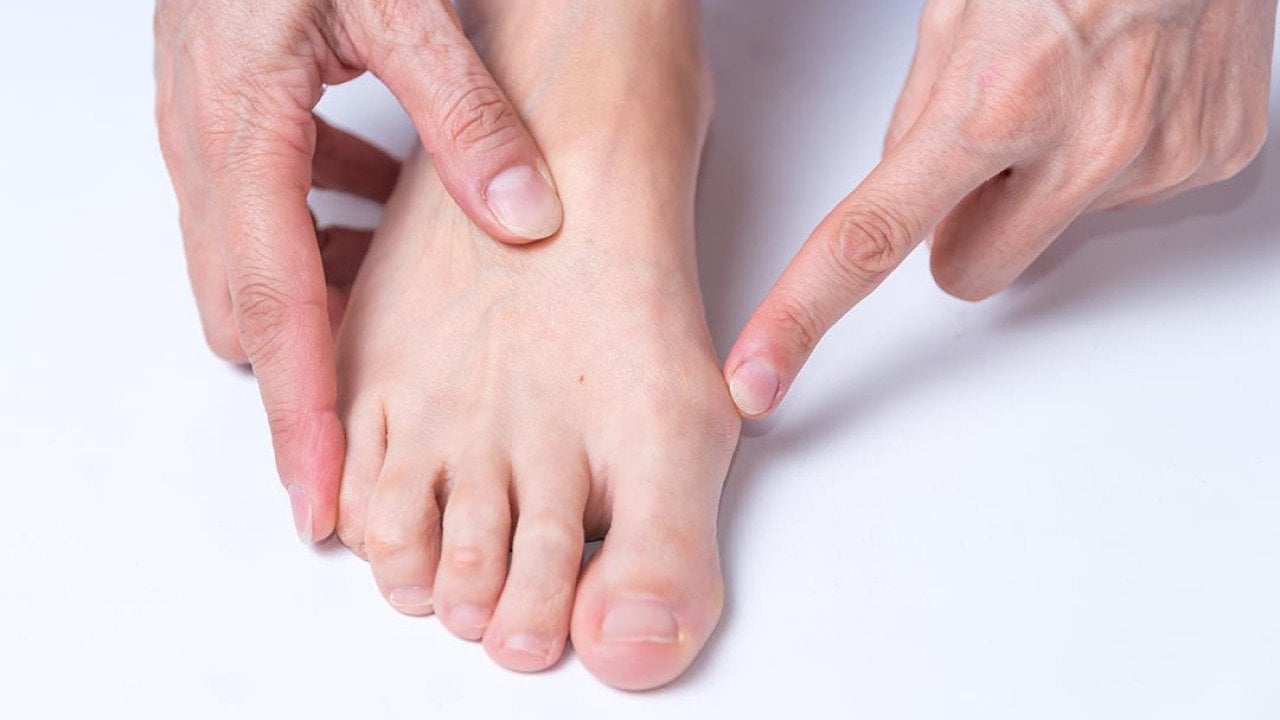Bunions, characterized by a red, swollen bump at the base of the big toe, affect many individuals, particularly those over the age of 65. According to Northwell Health, approximately one in three people in this age group has bunions, which can significantly impact their daily activities. The condition can lead to pain, making it difficult to wear shoes comfortably, walk, or remain active. Early intervention is crucial, as untreated bunions may progress and increase the risk of complications such as arthritis and bursitis.
Causes and Symptoms of Bunions
The term “bunion” originates from the Greek word for turnip, aptly describing the bulbous growth that can develop on the foot. Bunions occur when the bones, tendons, and ligaments around the big toe shift out of alignment. This often results from prolonged pressure on the metatarsophalangeal (MTP) joint, where the big toe connects to the foot.
An estimated 70% of individuals with bunions report having a family history of the condition, indicating a genetic predisposition influenced by certain foot shapes or bone structures. Additionally, wearing shoes with a narrow toe box or elevated heels can exacerbate this issue by forcing the toes together. Women, in particular, are more prone to develop bunions, partly due to habits of wearing high-heeled shoes and higher estrogen levels, which can weaken connective tissue.
Individuals with bunions typically experience swelling and, in severe cases, pain and stiffness that can hinder standing and walking. The friction caused by footwear rubbing against the bunion may further aggravate discomfort.
Treatment Options for Bunions
While not all bunions cause significant pain, those who experience mild discomfort may benefit from nonsurgical treatments to manage their condition. Home remedies typically recommended by healthcare professionals include:
– Choosing shoes with a wide toe box or an open toe area.
– Using toe spacers to prevent overcrowding of the toes.
– Applying bunion pads or cushions to reduce pressure and friction.
– Utilizing orthotics, such as arch supports or shoe inserts.
– Wearing a bunion splint at night to maintain proper alignment.
– Taking over-the-counter anti-inflammatory medications to alleviate pain and swelling.
– Consulting with a physician about steroid injections to reduce inflammation.
When nonsurgical methods fail to relieve pain or improve quality of life, a bunionectomy may be necessary. This surgical procedure realigns the bones, ligaments, and tendons in the toe joint, addressing the underlying issue rather than merely correcting the appearance of the bunion. As Dr. Adam Bitterman, an orthopedic surgeon at Northwell Health, explains, surgery is appropriate when foot pain significantly impacts daily life.
The bunionectomy procedure involves repositioning the toe joint, often requiring the insertion of pins and screws to stabilize the bones. The surgery typically lasts between 30 minutes to an hour, and patients can often go home the same day.
Minimally invasive techniques are increasingly being employed by orthopedic surgeons, as they allow for smaller incisions and potentially quicker recovery times. This approach tends to be less painful and may facilitate faster healing.
Recovery from bunion surgery can vary. Many patients are able to engage in partial weight-bearing activities two weeks post-operation and may return to regular footwear within six weeks. However, a complete recovery, including a return to full activity, may take up to four to six months.
Bunions can recur if the surgical alignment is not properly executed or if post-operative care instructions are not followed. It is also possible for individuals to develop bunions on the opposite foot or a bunionette on the pinkie toe. Therefore, consulting with a specialized foot healthcare provider is essential for effective treatment.
Bunions, while common, can significantly affect one’s quality of life. Awareness and early intervention can help mitigate their impact, allowing individuals to remain active and comfortable in their daily routines.
